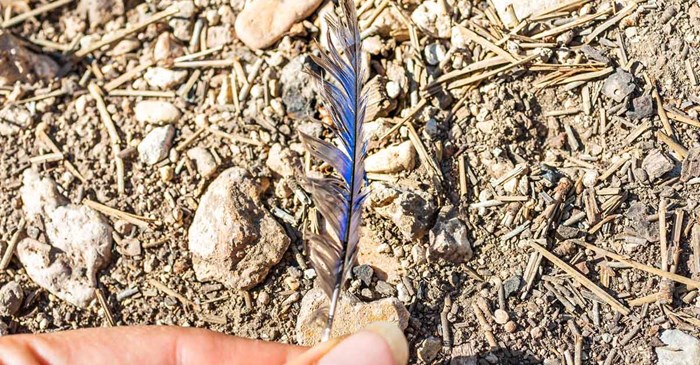Birds molt once, sometimes twice a year. As fall approaches, many of the songbirds you see in your backyard will be shedding their old set of feathers to get ready for winter. Let's take a look at what that means and how you can help.
Why do birds molt?
Since birds live outdoors 24/7, the feathers that protect their bodies from moisture and cold can take a beating. Rain, wind, sun, heat, preening, dust baths, tree bark — all are things that can cause a feather to weaken and tear. Birds grow in a fresh set of feathers just in time for the challenges of migration and winter weather.
How do the feathers grow in?
Feathers are made of keratin, just like our hair and fingernails. Unlike our hair and fingernails, new feathers don’t grow in constantly, but on an as-needed basis. So if a bird’s tail feather or flight feather falls out before molting season, the bird’s body will replace it. But this out-of-season feather may come in all black or all white — kind of like sewing on a patch until a replacement can be found. Then, in the spring and fall, the bird’s hormones tell the body to start releasing old feathers so new ones can grow in.
How often do birds molt?
As you can imagine, replacing feathers means expending a lot of energy. For that reason, large birds replace their feathers in stages over a period of several years. Small songbirds generally replace feathers twice a year. Even so, a springtime molt can mean replacing head and body feathers, and leaving tail and flight feathers intact, with the full molt taking place in late summer.
Males in some species will even change color in the fall. The prime example is the American Goldfinch. These birds turn canary yellow in the spring, so they look their best to attract a mate. By winter, they take on the olive-brown appearance of the female, which lets them better blend in with their surroundings.
In July and August, don’t be alarmed if some of the birds at your feeder look odd — disheveled or, in some cases, bald. If the birds are looking a bit worse for wear, don’t worry. In a matter of days, new feathers will fill in and make them look good as new.
When birds molt, filling the feeders is a great way to help them meet their energy needs. Lyric Delite Mix offers nothing but the high-quality proteins birds need this time of year. It has peanuts, sunflowers, pecans, and pistachios - minus the shells - so there’s no mess to clean up from your deck or yard.
